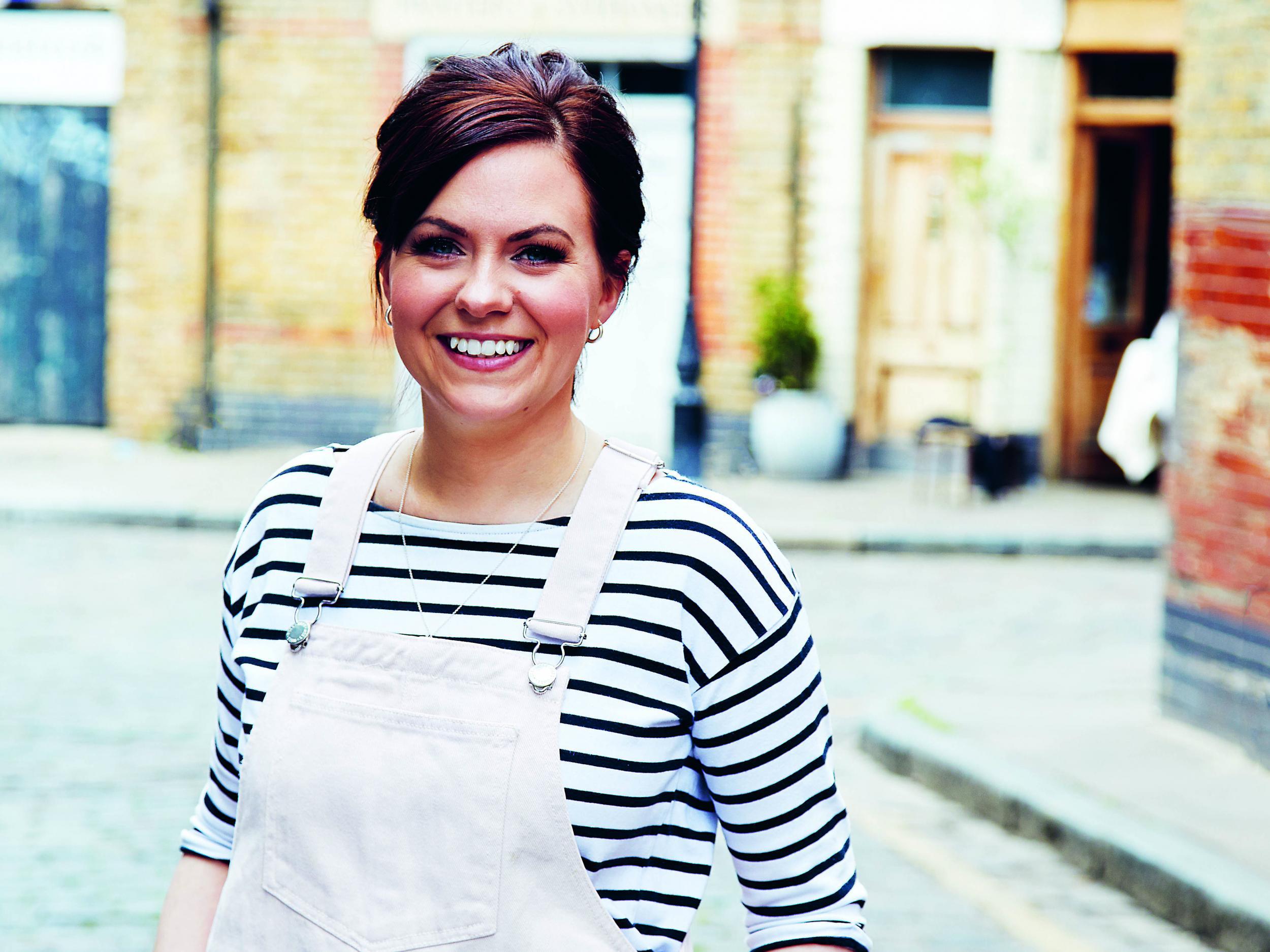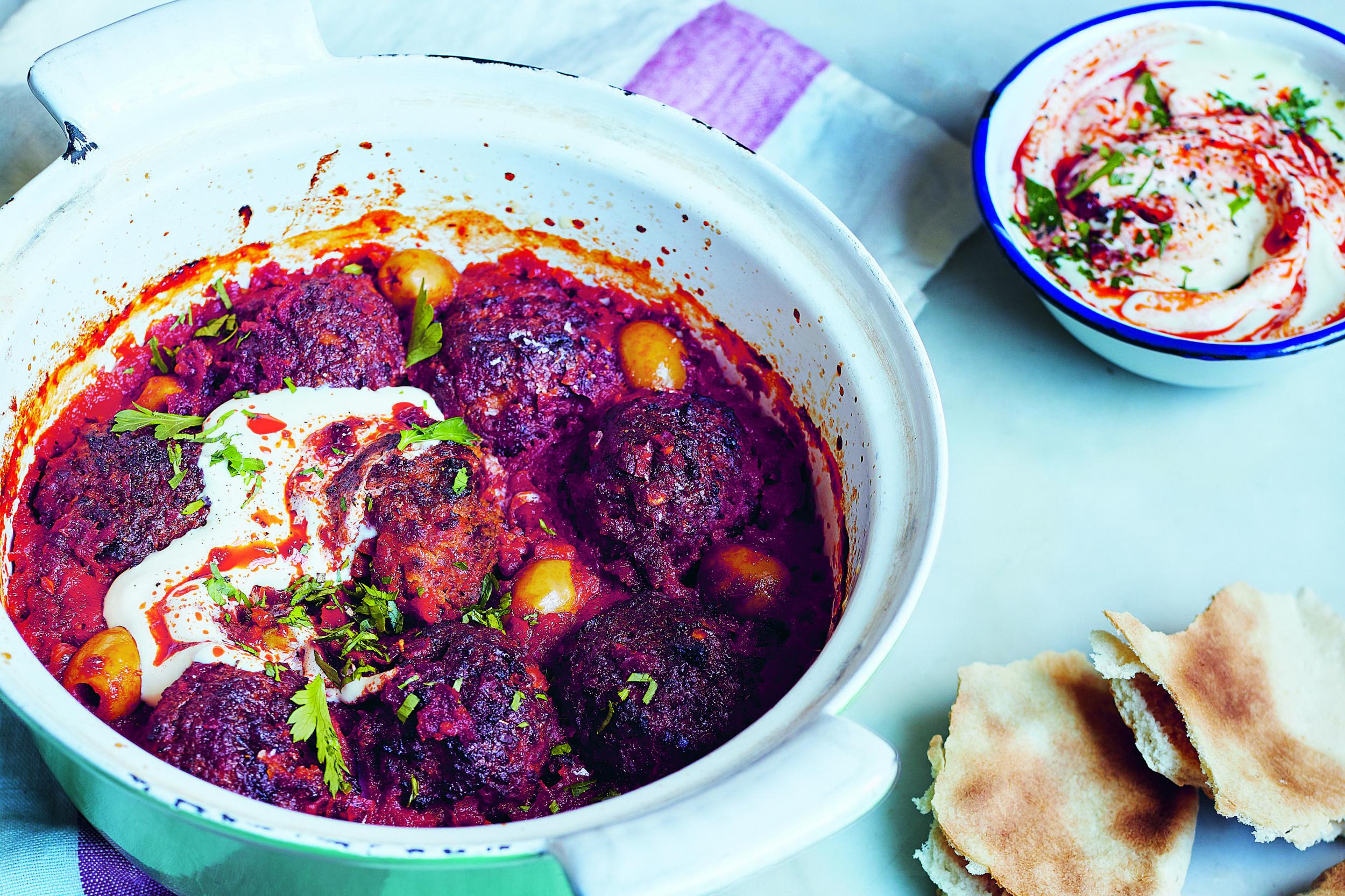‘You don’t look like a vegan’: Katy Beskow on why vegan food needn’t be time-consuming, expensive or full of hard-to-find ingredients
Emma Henderson talks to the food writer about convenience food, not shopping at health stores and why making your own plant-based takeaway is a much better option than ordering in


Your first three books were all vegan and based around making recipes in 15 minutes – where did this idea come from and how easy was it to make a whole book of speedy recipes?
When I first started food writing and teaching cookery classes seven years ago, I also worked full time in a demanding day job, so the food I was cooking up for my own dinner had to be quick and easy.
I developed a repertoire of recipes that were ready in 15 minutes or less, and I wanted to share them with others who need dinner on the table in no time.
There are so many of us who juggle multiple demands, jobs and family, who want to come home to good food that is quick, easy, and doesn’t require difficult-to-source ingredients.
What do you say to anyone who says being vegan is expensive?
Just like any other diet, if you purchase processed convenience foods, then it will be expensive.
If you buy whole foods, eat seasonally, and cook at home it is considerably cheaper.
You can cook up a shepherd’s pie with a can of green lentils (costing less than £1) which is far cheaper than using lamb mince.
Your fifth book, Vegan Fakeaway, has just been published this month – what was the inspiration behind this book?
We all love takeaway food. It’s one of life’s little pleasures, and a great way to try delicacies from around the world, in the comfort of our own homes. It is a costly way to eat however, especially over a month if you are ordering in regularly, because you are paying not only for the ingredients, chefs and delivery, but also the packaging it is brought in, which is usually non-recyclable single use plastics or oil-stained boxes that are not able to be recycled.
Although there are now many vegan options available at takeaways, it is always a concern of vegans that cross-contamination may have occurred.
In general, we are much more aware of what actually goes into our food in 2020. In the past, I’ve had to wait 1-2 hours for a takeaway delivery, and in fact, you can whip up something wonderful in far less time than that! In this book, I’ve included one-pot recipes (to reduce the washing up!), 15-minute recipes, and slow-cooker recipes (so you have a meal ready when you come home).
In your books, you don’t use hard-to-find ingredients, but how did you avoid it?
I very rarely shop in health food stores or specialist vegan shops. I tend to shop at supermarkets, so if I can’t find an item there, I won’t use it. I’ll find an alternative instead, to ensure that others can find the ingredients easily too. It’s all about making vegan cooking as accessible as possible!

How do you think your cooking style differs from other vegan recipe writers?
I create fuss-free food for people who are busy, and who don’t want to spend hours cooking in the kitchen. There’s nothing worse than finding a recipe with an endless ingredient list that will sit in your cupboard for years without being used again. I write about the food that I enjoy eating, mainly comfort food, with short cuts for the real world.
What’s your earliest food memory?
Eating pineapple fritters from a street vendor in Hong Kong, I would have been aged three. Crisp, hot and sweet – never forgotten!
You’ve been vegan for 13 years, which is way before it became really popular a few years ago. What was it that made you want to be vegan?
As a life-long animal lover, I have been vegetarian from childhood. I became vegan in 2006, when I moved to south London for university and stumbled across a fruit and vegetable market, which left me intoxicated with new fragrances and tastes.
I had a very limited budget and found that vegan foods allowed me to cook dishes that would become staples, without the use of any animal ingredients. I also switched to cruelty-free cosmetics, and never again bought clothing that used animal products.
It must have been quite hard then to eat out then too?

It was more challenging than it is now, but I never went hungry when eating out.
So many dishes are accidentally vegan such as pasta arrabbiata (when egg-free pasta is used), and sweet and sour bean curd.
Most independent and chain restaurants have specific vegan menus now, or at least a few vegan options.
But it’s just about communicating and thinking outside the box about what is “accidentally vegan” or can be made vegan.
What’s the most annoying misconception you find some people have about being vegan?
“You don’t look like a vegan” is something I’ve had for many years now, although less often in recent times.
I’m not sure if they expected a skinny, tree-hugging hippy, rather than a chatty northerner who doesn’t set foot inside a health food store.
Was there one dish you most missed when you went vegan?
The only thing I ever missed was Fry’s Turkish Delight! So I started making my own. I must make a batch of that again soon, actually.
What’s your top tip for anyone who is starting to go vegan?
Switch the regular items in your fridge for vegan alternatives, choose a plant milk (there’s so much more availability than soya milk now), switch to a vegan butter, and choose a fresh vegan cream cheese.
As you finish an item, such as mayonnaise, purchase the vegan alternative at your next shop. Simple changes that make the world of difference.
Who taught you to cook?
I’m part of a family where food is at the heart of every celebration, so I was involved in the kitchen from a young age. My mum taught me the basics, which I was then able to veganise years later.
What’s your can’t-live-without ingredient?
Canned chopped tomatoes.
From curry to cassoulet, this store cupboard essential is so versatile that you can always create a meal from your cupboard.
You also have a cookery school in Yorkshire, did you ever imagine you’d do that?
(I teach classes at a cookery school, I don’t own it) I love teaching vegan cookery classes at Yorkshire Wolds Cookery School.
They sell out very quickly, and there’s a range of guests who have booked on classes, including a butcher who was looking for something a little different!
Is there one type of food that’s really hard to make vegan, like puddings?
A couple of years ago, I’d have said it was near impossible to recreate meringues, but now, with the discovery that aquafaba (the unsalted liquid from a can of chickpeas) can substitute eggs in any meringue recipe, it’s a fail-safe way to make the dessert. It’s like magic!
Where’s your favourite vegan restaurant?
Vanilla Black, Chancery Lane, is an outstanding vegetarian restaurant with an incredible vegan menu.
It’s modern, inspired, and Michelin recommended. A real treat to visit whenever I’m in the city.
‘Vegan Fakeaway’ by Katy Beskow (Quadrille, Hardback & eBook). Photography © Luke Albert
Join our commenting forum
Join thought-provoking conversations, follow other Independent readers and see their replies
0Comments